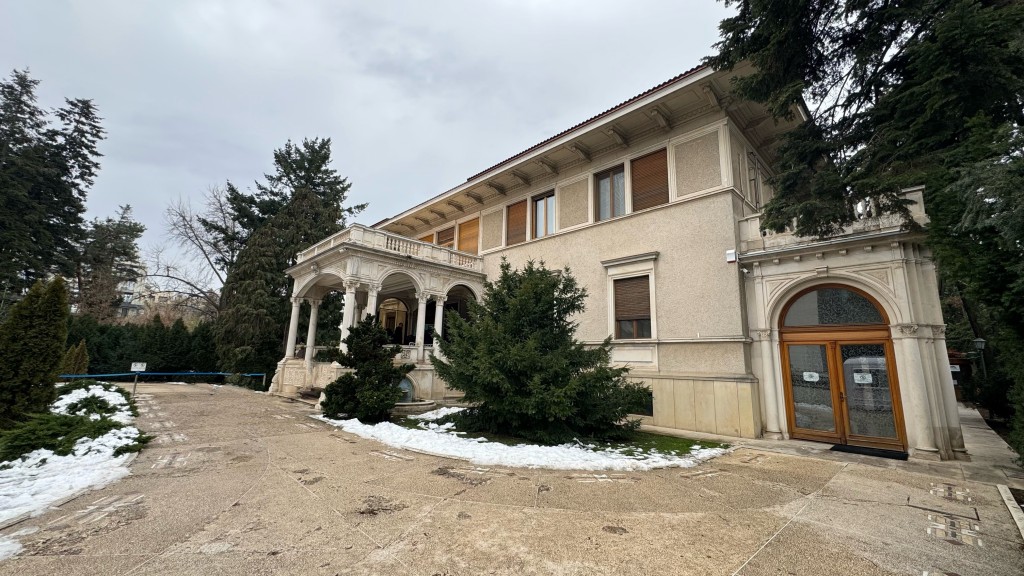The Ceaușescu Spring Mansion, located in the upscale area of Bulevardul Primaverii(Spring Blvd.) in Bucharest, holds a significant place in history as it served as one of Nicolae Ceaușescu’s properties for nearly 25 years. Today, it stands as a museum and a state protocol villa, offering visitors the chance to delve into the intriguing past of Romania’s last dictator.

One can immerse oneself in a guided tour that promises a captivating journey through the mansion, unveiling enthralling anecdotes and urban legends. This experience not only provides a fascinating history lesson but also grants insight into the life of the communist party leader and President of Romania from 1967 to 1989. The mansion holds guided tours for the public from Tuesday to Sunday, welcoming visitors between 10.00 AM and 5.00 PM.

It’s essential to note that for groups larger than 10 persons, pre-booking either via phone or online is necessary to ensure a seamless and enjoyable visit. However, do keep in mind that the mansion remains closed on Mondays throughout the year and during legal holidays in Romania. The visit itself unfolds exclusively with a guide, conversant in either Romanian or English, adding depth and context to the experience. The tours are 15 minutes apart from each other.

As visitors wander through this historical gem, it’s important to bear in mind that access for individuals with locomotor disabilities (wheelchair) is currently not feasible due to the building’s configuration. Additionally, baby strollers are not permitted during the tour, ensuring the preservation of the mansion’s integrity.

For those wanting a more exclusive experience, private tours are available for a fee of 250 lei per person, offering a personalized exploration of the mansion’s rich history. Furthermore, the mansion can also host corporate and cultural events, adding a touch of historic grandeur to any occasion.

Photography enthusiasts will be pleased to know that while touring the mansion, they can take free photos (without flash), preserving memories of this extraordinary visit. However, it’s important to note that the ticket office closes 45 minutes before the end of visiting hours, and the final tour of the day commences at 5.00 PM, ensuring a seamless and organized experience for all visitors. We recommend you buy tickets online in advance of your visit to ensure the access to the villa as some intervals may be crowded and access might become limited without reservations.
The villa is a true testament to the enduring craftsmanship and dedication of its caretakers. Every nook and cranny is meticulously maintained, ensuring that its historical significance and beauty are preserved for generations to come. The collection of artifacts within its walls chronicles the rich tapestry of state visits and the exchange of gifts with other nations. Each item tells a unique story, bridging cultures and highlighting the diplomatic relationships of the communist years. Whether it’s a captivating painting, a striking sculpture, or an exquisite piece of craftsmanship of wood, stone, metal or glass, each artifact serves as a tangible link to the past, encapsulating the designers vision of the time.

The Ceausescu villa underwent a significant expansion during his presidency, which involved the addition of a more contemporary wing. This new wing boasts exquisite mosaic and tile craftsmanship, resounding a more oriental design pattern with inspiration and pieces similar to what is found at the Taj Mahal, a departure from the English or French designs that characterized the original structure.

The villa is adorned with fountains, a semi-Olympic indoor pool, a sauna and Spa rooms, a cinema, as well as numerous living and protocol quarters. These quarters include dormitories, opulent bathrooms, walk-in dressers, and spacious balconies offering stunning views of the internal garden, teeming with fauna such as peacocks received from diplomatic visits to Japan, as well as local plants, trees, and fountains.
Notably, the construction of this villa heavily relied on local craftsmanship and the manufacturing of furniture and mosaic, with some pieces potentially being gifts from diplomatic sources.

At the end of the tour you can still take your time in getting your head around all the facts the guide will provide about the villa’s interior design patterns, the couple’s house habits and descriptions of various objects provenience.
Directions to the villa:
Leave a comment